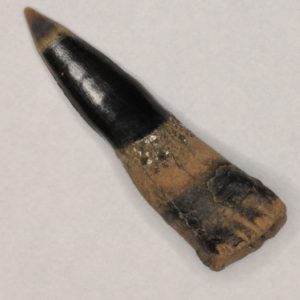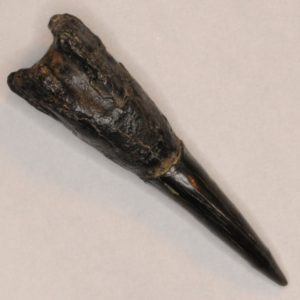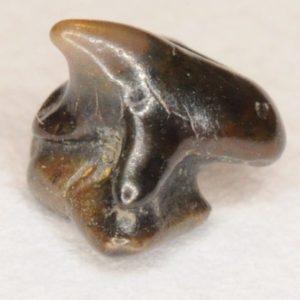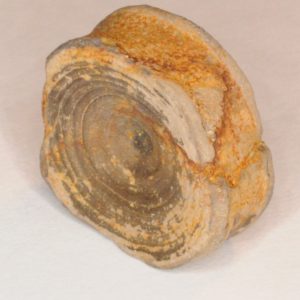NJfossils.com
"Fossils aren't a hobby, they're a lifestyle."Sawfish (Ischyrhiza mira)
Age – Late Cretaceous; Commonality – Rostrals: Less Common, Oral teeth: Uncommon (when using a fine meshed screen), Vertebrae: Very Uncommon, Potential dermal denticles: Rare; Size – Rostrals: ½-2+ inches, Oral teeth: 3-6 millimeters, Vertebrae: ½ – 2 ½ inches, Potential denticles: ½-3/4 inch
This was a large sawfish reaching about 8 ft. in length. Unlike modern sawfish (Pristids and Anoxypristids), which have their rostrals growing continuously directly from their rostrums, Ischyrhiza rostrals were attached to the rostrum with a root base. The rostrum was used to hunt fish. The oral teeth were shed and replaced, just like the rostrals, and were used by the sawfish to devour the prey. The rostrals have a bilobate root which has ridges on the very base. The crown is smooth (sometimes has faint growth cracks and ridges) with two carinae on opposite sides and tapers to a point, which is usually white in color. The oral teeth have a bilobate root (with the root lobes looking like isosceles triangles when the tooth is viewed in basal view) which possesses a nutrient pore in the center. The crown is relatively large and broad. It has an apron on the labial side and small enameled shoulders. The crown apex is fairly robust. The potential dermal denticles are referred to as “Peyeria sp.,” and are potentially from I. mira. They are described in detail on the “Ray Dermal Denticles” page.
Rostral Spines
Oral Teeth
The lingual root foramina stand out well on this anterior oral tooth.
This tooth is pathological (it is contorted).
Vertebrae
Sawfish vertebrae differ from shark vertebrae in that they don’t have the foramina along the edges where cartilage processes once attached. Sawfish had the processes, but they attached elsewhere. Information from Al Dente on TheFossilForum.












































